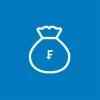Retirement funds are widely used for Swiss pillar 3a private retirement savings. Investing in your pillar 3a retirement savings is recommended because contributions to pillar 3a assets are tax deductible.
Some retirement funds can be used for either pillar 3a assets or for pillar 2 vested benefits from occupational pension funds.
There are a number of points to consider when choosing an investment fund for your retirement assets. Choosing the right solution is key to maximizing your retirement savings.
1. Investment horizon
From a historical viewpoint, retirement funds have consistently delivered higher returns on average than pillar 3a retirement accounts. However, you should note that historical developments are not a clear indicator of future developments.
Funds do not pay out interest like retirement accounts do. Funds deliver returns when they perform well but can deliver losses when they perform poorly. It can take many years for retirement funds to recover from a major stock market recession, and you must be willing and able to wait out these recovery periods.
The rule of thumb: Holding retirement fund investments for at least 7 to 10 years will help to minimize the risk of loss. Buying into a retirement fund with a large stock component several years ahead of withdrawing your retirement assets is not recommended because you may end up withdrawing assets at a low point in the stock market.
Conclusion: Use retirement funds if you have many years (ideally decades) to go before your reach retirement age.
2. Risk profile
Many fund providers offer multiple retirement funds, each with different a portfolio. Components normally included in funds in varying proportions include stocks, bonds and cash. Some funds include additional components like real estate, precious metals and money market investments.
As a rule of thumb, the higher the proportion of equities, the higher the potential return. In the short term, the fund is also riskier. In the long term, however, a high proportion of equities does not necessarily mean a significantly higher risk, as well-diversified equity funds have usually increased significantly in value in the past.
Providers offer funds with more conservative strategies and funds with riskier strategies. There are now also pension funds with a stock component of almost 100 percent.
Tip: Choose a strategy that suits your risk profile for the desired investment period. The retirement fund comparison on moneyland.ch makes it easy to filter funds based on your risk profile.
3. Active or passive
Most fund managers now offer both conventional actively-managed funds and passively-managed funds. Passively-managed funds typically have slightly lower costs, and are the better option for many investors. The retirement fund comparison lets you limit results to actively-managed or passively-managed funds.
Conclusion: Using passively-managed funds helps minimize costs and maximize potential gains.
4. Accruing or distributing
Funds may be accruing (dividends are reinvested) or distributing (dividends are paid out). The majority of Swiss retirement funds are accruing funds which reinvest dividends in the fund’s net asset value.
Because retirement funds are typically held for long periods of time, accruing funds are advantageous. By reinvesting dividends year after year, a compounding interest effect is achieved.
Conclusion: Accruing funds are better suited to retirement saving than distributing funds.
5. Compare total costs
When choosing a retirement fund, comparing the total cost of funds is crucial to making the right choice. Many funds have high fees negate returns, and in the worst can even eat into your capital. Expensive funds can easily cost you thousands of francs per year.
The total expense ratio (TER) is the most important fee to consider. This fee is charged annually and covers most of the administrative costs. It may change from year to year. Other fees and costs may apply in addition to the TER. Annual custodial fees may be charged by the custodian bank which holds your fund shares. Some funds charge a fee every time you buy fund shares (front end loads). Some charge you fees when you sell shares (back end loads). All of the possible costs of retirement funds are explained in detail in the guide to the costs of Swiss retirement funds.
Front end loads – fees charged when you buy fund shares – are the most important one-time fees. These are charged every time you buy new fund shares (when you invest in the fund), and are deducted directly from your investments. Avoid using funds which have high front end loads.
The interactive retirement fund comparison on moneyland.ch clearly lists all relevant fees and charges for each retirement fund. You can sort all funds based on their total costs. You can also perform simulations and get cost estimates for different investment terms. The longer the investment term, the lower the impact of one-time front end loads and back end loads on your overall retirement investment.
Conclusion: Always compare the total costs of retirement funds.
6. Official performance
Funds must publish their performance figures on a regular basis. These ratings are interesting, but should not be the defining factor when choosing retirement funds. Firstly, not all costs are accounted for in performance figures. Secondly and most importantly, the past performance of a fund is not a clear indicator of that fund’s future performance. It is not uncommon for funds to perform very well over a certain timeframe and poorly over a subsequent timeframe.
Developments in the stock market are a primary deciding factor. Funds with large stock components will generally perform well when the stock market is booming. Funds with low stock components are generally among the best performers during stock market recessions. There is no sure way to know how markets will develop in the future. In the long term, however, pension funds with the highest possible proportion of equities perform best.
The Swiss retirement fund comparison clearly shows the historical official performance figures for each fund.
Conclusion: When choosing a retirement fund, costs are more relevant than historical performance.
7. Net performance
The official performance figures published by funds only account for the cost of TERs. They do not account for other costs like custodial fees, front end loads and back end loads. Depending on the fund, the true performance can be much lower than the official figures, when all costs are accounted for. The moneyland.ch comparison accounts for all costs to compare retirement funds based on their true, net performance.
A function programmed into the moneyland.ch comparison lets you simulate the net historical performance of Swiss retirement funds over multiple timeframes. As with official performance figures, net historical performance figures are not a clear indicator of future performance.
Conclusion: Be aware that official fund performance figures do not account for all costs.
8. Choosing the right fund
Step 1: Carefully consider your risk tolerance and capacity. If you are willing and able to take on more risk in order to potentially achieve higher gains, you can use the filters in the Swiss retirement fund comparison to limit results to funds with high or very high risk.
Note that the longer the investment term is, the less significant the risk posed by rate fluctuations is. For example, if you plan to invest over a 15-year term, you can use a fund with a higher risk level than you would for a 5-year investment term because the long timeframe gives markets time to recover from recessions.
Step 2: Use the moneyland.ch retirement fund comparison to sort funds based on their total costs. Choose the most affordable retirement fund.
Step 3: If other factors are important to you, make sure to account for these when comparing funds. You can find useful information about funds which you are interested in – including net asset values and investment strategies – on their individual information pages.
Conclusion: Use the most affordable retirement funds which match your risk profile.
9. Financial advisors
Considering the high fees which many retirement funds charge their investors, the fact that many funds offer commissions to financial advisors is hardly surprising. Be leery of consultants who try to sell you on expensive, actively-managed retirement funds. This type of financial advisor is more interested in earning high commissions at your expense than in helping you save for retirement.
Conclusion: Ask your bank representative or financial advisor for complete cost breakdowns for any funds which they recommend. Ideally, compare the costs yourself.
10: Funds linked to life insurance
Be wary of consultants who try to sell you permanent life insurance as a retirement-saving solution. Insurance companies pay out high commissions for life insurance sales. In most cases, fund-linked life insurance solutions are only profitable for insurance companies and consultants and not for you as the policyholder.
Fund-linked life insurance which combines a retirement fund investment with insurance are generally best avoided. If you need life insurance to protect dependents in the event of your death, getting affordable term life insurance separately from any saving or investment vehicle is recommended.
Conclusion: Do not use insurance policies for retirement fund investments. Keep your investment and insurance solutions separate.
11. Consider alternatives
In recent years, conventional retirement funds have been supplemented by a variety of wealth management solutions which perform a similar function. These include Internet-based retirement wealth management solutions.
The advantages of these solutions are that your investment is diversified across multiple funds rather than just one. Your investment is managed for you, and is regularly rebalanced to optimize returns. The funds used are typically much more affordable than conventional retirement funds. As with retirement funds, these wealth management solutions let you benefit from the tax privileges of the pillar 3a and/or vested benefits. The fees for these online wealth management services is low, which makes them a viable alternative to conventional funds.
Another option is to invest yourself outside of the pillar 3a using low-cost ETFs and an affordable online broker. The advantage of doing this is that you can choose from a much wider selection of investment vehicles and you can access your capital at any time. The disadvantage is that your investments are not tax deductible like pillar 3a investments are. Successfully investing on your own requires a fair amount of know how. Affordable wealth management solutions (like True Wealth) provide an alternative for investing outside the pillar 3a without investment know-how.
Conclusion: Take time to review affordable alternatives to retirement funds.
12. Selling fund shares
Pillar 3a assets and vested benefits must be withdrawn when you reach retirement age. If these assets are held in retirement funds, your fund shares must be sold within the required timeframe.
If your reaching retirement age coincides with an economic recession, you may be forced to sell your fund shares at unfavorable rates. A safe option is to sell retirement fund shares near to retirement at a favorable point in the market and transfer your assets to a pillar 3a retirement account.
Another option is to invest in a retirement fund which you can remain invested in (as a regular, non-retirement fund) after you reach retirement age. Some fund managers give you the option of selling your retirement fund shares and automatically transferring the proceeds to a similar non-retirement fund free of charge.
If you live outside of Switzerland, consider transferring pillar 3a assets and vested benefits to a foundation in a low-tax canton ahead of withdrawals.
Conclusion: Plan withdrawals from retirement funds well in advance to optimize retirement savings.
13. Use multiple retirement funds
Dividing your pillar 3a assets and vested benefits between multiple retirement funds and/or retirement accounts is beneficial because pillar 3a and vested benefits solutions must be cashed out in full. By holding assets in multiple solutions, you can cash them out over several years and thus avoid being bumped into high tax brackets. This applies to both retirement funds and retirement accounts.
Conclusion: If you have fairly high pillar 3a and vested benefits savings, divide your assets between several retirement funds.
More on this topic:
Compare Swiss retirement funds now
The costs of retirement funds explained
Compare Swiss pillar 3a retirement accounts now
Compare Swiss vested benefits accounts now


 Deal of the Day
Deal of the Day 










